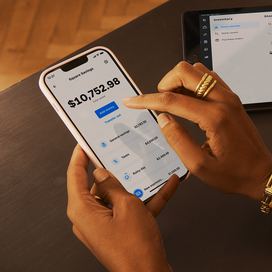Table of contents
When will I break even? It’s one of the biggest questions you need to answer when you’re starting a business. And that’s why it’s so crucial to conduct a break-even analysis, which helps you determine fixed costs (like rent) and variable costs (like materials) so you can set your prices appropriately and forecast when your business will become profitable.
Central to the break-even analysis is the concept of the break-even point (BEP). The following break-even point analysis formulas will help you get there.
What is the break-even point for a business?
A business’s break-even point is the stage at which revenues equal costs. Once you determine that number, you should take a hard look at all your costs — from rent to labor to materials — as well as your pricing structure.
Then ask yourself these questions: Are your prices too low or your costs too high to reach your break-even point in a reasonable amount of time? Is your business sustainable?
How to calculate your break-even point
There are a few basic formulas to help you calculate the break-even point for your business. One is based on the number of units of product sold, and the other is based on points in sales dollars. Here is how to calculate the break-even point:
How to calculate a break-even point based on units:
Divide fixed costs by the revenue per unit minus the variable cost per unit. The fixed costs are those that do not change, no matter how many units are sold. Revenue is the price for which you’re selling the product minus the variable costs, like labor and materials.
To calculate your break-even point in units, use the following formula: Break-Even Point (Units) = Fixed Costs ÷ (Revenue per Unit – Variable Cost per Unit).
When determining a break-even point based on sales dollars:
Divide the fixed costs by the contribution margin. The contribution margin is determined by subtracting the variable costs from the price of a product. This amount is then used to cover the fixed costs.
To calculate your break-even point in sales dollars, use the following formula: Break-Even Point (sales dollars) = Fixes Costs ÷ Contribution Margin.
Contribution Margin = Price of Product – Variable Costs
To get a better sense of what this all means, let’s take a more detailed look at the formula components.
- Fixed costs: As noted above, fixed costs are not affected by the number of items sold, such as rent paid for storefronts or production facilities, computers, and software. Fixed costs also include fees paid for services like graphic design, advertising, and public relations.
- Contribution margin: The contribution margin is calculated by subtracting an item’s variable costs from the selling price. So if you’re selling a product for $100 and the cost of materials and labor is $40, then the contribution margin is $60. This $60 is then used to cover the fixed costs, and if there is any money left after that, it’s your net profit.
- Contribution margin ratio: This figure, usually expressed as a percentage, is calculated by subtracting your fixed costs from your contribution margin. From there, you can determine what you need to do to break even, like cutting production costs or raising your prices.
- Profit earned following your break even: Once your sales equal your fixed and variable costs, you have reached the break-even point, and the company will report a net profit or loss of $0. Any sales beyond that point contribute to your net profit.
How to use a break-even analysis
A break-even analysis allows you to determine your break-even point. But this isn’t the end of your calculations. Once you crunch the numbers, you might find that you have to sell a lot more products than you realized to break even.
At this point, you need to ask yourself whether your current plan is realistic or whether you need to raise prices, find a way to cut costs, or both. You should also consider whether your products will be successful on the market. Just because the break-even analysis determines the number of products you need to sell, there’s no guarantee that they will sell.
Ideally, you should conduct this financial analysis before you start a business so you have a good idea of the risk involved. In other words, you should figure out if the business is worth it. Existing businesses should conduct this analysis before launching a new product or service to determine whether or not the potential profit is worth the startup costs.
Break-even analysis examples
A break-even analysis isn’t just useful for startup planning. Here are some ways that businesses can use it in their daily operations and planning.
- Prices: If your analysis shows that your current price is too low to enable you to break even in your desired timeframe, then you might want to raise the item’s cost. Make sure to check the cost of comparable items, though, so you’re not price-setting yourself out of the market.
- Materials: Are the costs of materials and labor unsustainable? Research how you can maintain your desired level of quality while lowering your costs.
- New products: Before you launch a new product, take into account both the new variable costs as well as the fixed ones, like design and promotion fees.
- Planning: When you know exactly how much you need to make, it’s easier to set longer-term goals. For example, if you want to expand your business and move into a larger space with higher rent, you can determine how much more you need to sell to cover new fixed costs.
- Goals: If you know how many units you need to sell or how much money you need to make to break even, it can serve as a powerful motivational tool for you and your team.
![]()











